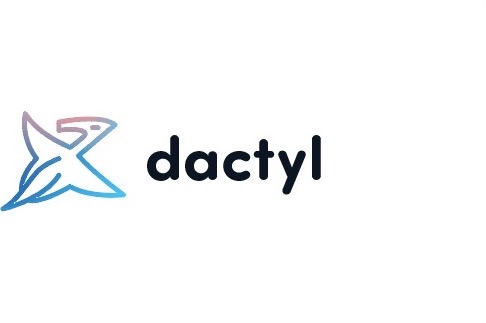
Web framework for Deno, built on top of Oak
TL:DR; Available modules:
Currently, through mod.ts, you have access to (docs link on left):
- Controller.ts - function decorator responsible for assigning controller metadata
- Application.ts - application class able to register controllers, and start the webserver
- HttpException - throwable exception inside controller actions,
Applicationwill then handle said errors at top level and send the appropriate HTTP status code and message. There is also a list of included predefinedHttpExceptionclasses, see below - HttpStatus.ts - function decorator responsible for assigning default status codes for controller actions
- Method.ts -
@Get, @Post, @Put, @Patch, @Deletefunction decorators responsible for defining routes on controller actions
For following - Arg.ts
@Paramdecorator mapscontext.paramsonto argument in controller action (returns wholeparamsobject if no key specified)@Bodydecorator mapscontext.requestasync body onto argument in controller action (returns wholebodyobject if no key specified)@Query- mapscontext.url.searchParamsonto argument in controller action (returns wholequeryobject if no key specified)@Header- mapscontext.headersonto argument in controller action (returns wholeheaderobject if no key specified)@Context- return whole OakRouterContextobject@Request- return whole OakRequestobject@Response- return whole OakResponseobjectRouter.ts - It is recommended that you use the
Applicationto bootstrap, but you can use theRouterclass directly. This is a superclass of Oak’s router, and exposes additional methods for mappingControllerdefinitions onto routes.
Purpose
Deno is the new kid on the block, and Oak seems to be paving the way for an express-like middleware and routing solution with our fancy new runtime. It’s only natural that abstractions on top of Oak are born in the near future - much like Nest tucked express middleware and routing under the hood and provided developers with declarative controllers, DI, etc. This project aims to provide a small portion of these features with room to expand in future.
Getting started
This repo contains an example project with one controller. You can execute this on your machine easily with Deno:
deno run --allow-net --config=tsconfig.json https://deno.land/x/dactyl/example/index.ts
One caveat is to ensure you have a tsconfig.json file enabling Reflect and function decorators for this project, as Deno does not support this in it’s default config. Ensure a tsconfig.json exists in your directory with at minimum:
{
"compilerOptions": {
"experimentalDecorators": true,
"emitDecoratorMetadata": true
}
}This should result in the following output:
______ _ _
| _ \ | | | |
| | | |__ _ ___| |_ _ _| |
| | | / _` |/ __| __| | | | |
| |/ / (_| | (__| |_| |_| | |
|___/ \__,_|\___|\__|\__, |_| FRAMEWORK
__/ |
|___/
/dinosaur
[GET] /
[GET] /:id
[POST] /
[PUT] /:id
[DELETE] /:id
Dactyl running - please visit http://localhost:8000/You can now visit your API.
Dactyl in action
In the above example project, there exists one Controller and a bootstrapping file, index.ts that starts the web server.
DinosaurController.ts
Controllers are declared with function decorators. This stores metadata that is consumed on bootstrap and converted into route definitions that Oak can understand.
@Controller("/dinosaur")
class DinosaurController {
@Get("/")
@HttpStatus(200)
getDinosaurs(@Query("orderBy") orderBy: any, @Query("sort") sort: any) {
const dinosaurs: any[] = [
{ name: "Tyrannosaurus Rex", period: "Maastrichtian" },
{ name: "Velociraptor", period: "Cretaceous" },
{ name: "Diplodocus", period: "Oxfordian" },
];
if (orderBy) {
dinosaurs.sort((a: any, b: any) => (a[orderBy] < b[orderBy] ? -1 : 1));
if (sort === "desc") dinosaurs.reverse();
}
return {
message: "Action returning all dinosaurs! Defaults to 200 status!",
data: dinosaurs,
};
}
@Get("/:id")
getDinosaurById(@Param("id") id: any, @Header("content-type") contentType: any) {
return {
message: `Action returning one dinosaur with id ${id}`,
ContentType: contentType,
};
}
@Post("/")
createDinosaur(@Body("name") name: any) {
if (!name) {
throw new BadRequestException("name is a required field");
}
return {
message: `Created dinosaur with name ${name}`,
};
}
@Put("/:id")
updateDinosaur(@Param("id") id: any, @Body("name") name: any) {
return {
message: `Updated name of dinosaur with id ${id} to ${name}`,
};
}
@Delete("/:id")
deleteDinosaur(
@Context() ctx: RouterContext,
@Request() req: OakRequest,
@Response() res: OakResponse
) {
return {
message: `Deleted dinosaur with id ${ctx.params.id}`,
};
}
}
export default DinosaurController;
index.ts
This file bootstraps the web server by registering DinosaurController to the Application instance. Application can then use the .run() async method to start the webserver.
import { Application } from "./deps.ts";
import DinosaurController from "./DinosaurController.ts";
const app: Application = new Application({
controllers: [DinosaurController],
});
await app.run(8000);And away we go. This spins up a web server using oak with the appropriately registered routes based on your controller definitions.
Configuration
There is additional configuration that you can pass to the application upon bootstrap:
const app: Application = new Application({
controllers: [DinosaurController],
config: {
cors: false, // true by default
timing: false, // true by default
log: false, // true by default
}
});cors- Enables CORS middleware (trueby default). This sets the following headers to*oncontext.response:access-control-allow-origin,access-control-allow-methods,access-control-allow-methods.timing- Enables timing header middleware (trueby default). This setsX-Response-Timeheader oncontext.response.log- Enables per-request logging (true by default). The message format is:00:00:00 GMT+0000 (REGION) [GET] - /path/to/endpoint - [200 OK]
Exceptions
Exceptions can be raised at any time in the request lifecycle. HttpException allows you to raise a custom exception, or you can
use a predefined HttpException (listed below):
BadRequestExceptionUnauthorizedExceptionPaymentRequiredExceptionForbiddenExceptionNotFoundExceptionMethodNotAllowedExceptionRequestTimeoutExceptionUnsupportedMediaTypeExceptionTeapotExceptionUnprocessableEntityExceptionTooManyRequestsExceptionRequestHeaderFieldsTooLargeExceptionInternalServerErrorExceptionNotImplementedExceptionBadGatewayExceptionServiceUnavailableExceptionGatewayTimeoutException
Modules
All modules are accessible without the example project by referring to them in your deps.ts file.
E.g.
export { Controller, DactylRouter, Get } from "https://deno.land/x/dactyl/mod.ts";In the works
@Injectable- DI implementation for controllers, allowing injectible services@Before, @BeforeAll- decorators for controller and controller actions for pre-request actions like validation- CLI tool for boilerplate generation and file structure
- Website with docos.